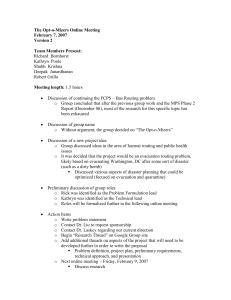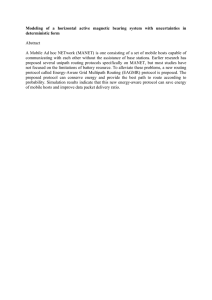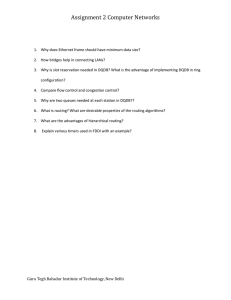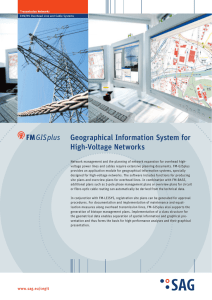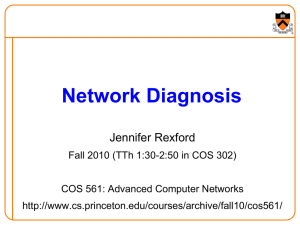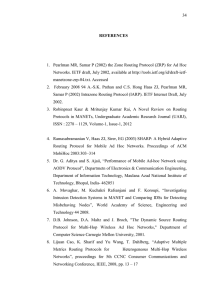ABSTRACT Mobile ad-hoc network routing protocol ...
advertisement
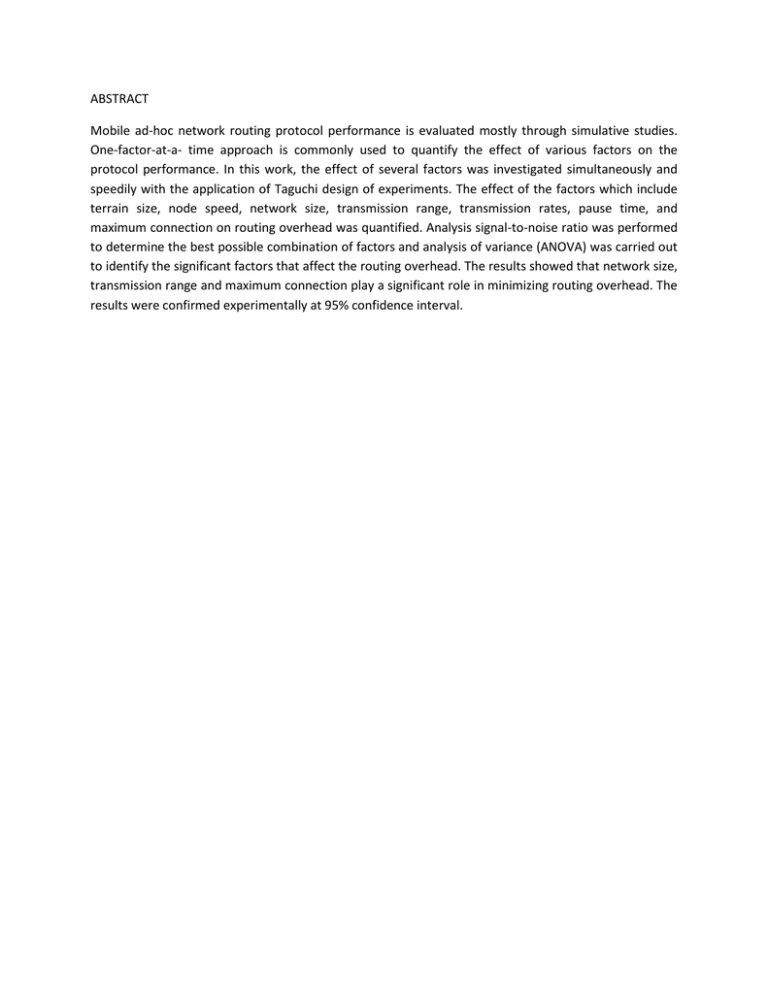
ABSTRACT Mobile ad-hoc network routing protocol performance is evaluated mostly through simulative studies. One-factor-at-a- time approach is commonly used to quantify the effect of various factors on the protocol performance. In this work, the effect of several factors was investigated simultaneously and speedily with the application of Taguchi design of experiments. The effect of the factors which include terrain size, node speed, network size, transmission range, transmission rates, pause time, and maximum connection on routing overhead was quantified. Analysis signal-to-noise ratio was performed to determine the best possible combination of factors and analysis of variance (ANOVA) was carried out to identify the significant factors that affect the routing overhead. The results showed that network size, transmission range and maximum connection play a significant role in minimizing routing overhead. The results were confirmed experimentally at 95% confidence interval.



